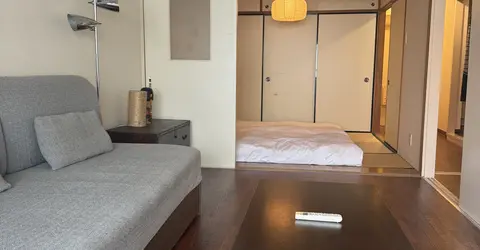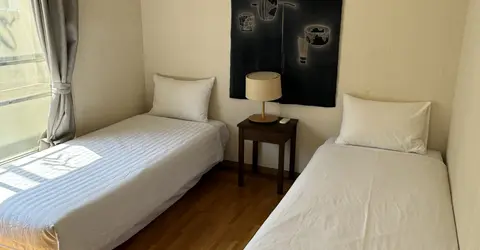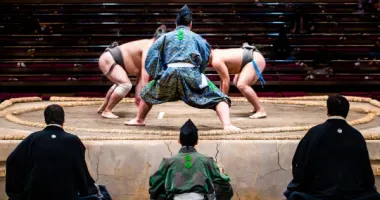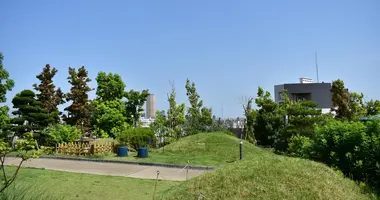Mukojima Hyakkaen Gardens
Mukojima Hyakkaen Gardens are a beautiful natural-style flower and strolling garden in Sumida ward, Tokyo, created in the Edo period of Japanese history and one of the few surviving to this day. Its wide range of plants ensure a spectacle for every season.
Mukojima Hyakkaen Garden 向島百花園
 Mukojima Hyakkaen Garden in Tokyo, Japan
Mukojima Hyakkaen Garden in Tokyo, Japan
Mukojima Hyakkaen is a small, historical strolling garden in the Mukojima district of Sumida ward in north-eastern Tokyo. This garden, more than a century old, is closely associated with the arts and literature, and is a must-see for aficionados of natural-style Japanese landscaping.
 Entrance to Mukojima Hyakkaen Garden, Tokyo, Japan
Entrance to Mukojima Hyakkaen Garden, Tokyo, Japan
 Japanese house in Mukojima Hyakkaen Garden, Tokyo, Japan
Japanese house in Mukojima Hyakkaen Garden, Tokyo, Japan
History
Mukojima Hyakkaen is distinguished by being Tokyo's only surviving garden from the Edo period of Japanese history. The park was the dreamchild of an antiques dealer, Sahara Kikuu, who, during the first three decades of the 19th century and with the help of fellow art and nature lovers, established an enchanting landscaped orchard here of 360 plum (ume) trees, creating a springtime blossom extravaganza.
Flowers were added to Mukojima Hyakkaen in following years, in line with the hyakkaen in the name of the garden, which means "one hundred flowers" in Japanese. The choice of flora was based on plants that feature in classic Chinese and Japanese literature.
The 20th century inheritors of Mukojima Hyakkaen donated the garden to the Tokyo metropolitan government in 1938, since which time it has been semi-public. In 1979, the national government designated it a site of historical significance.
 Pond in Mukojima Hyakkaen Garden, Tokyo, Japan
Pond in Mukojima Hyakkaen Garden, Tokyo, Japan
 Poetry engraving in Mukojima Hyakkaen Garden, Tokyo, Japan
Poetry engraving in Mukojima Hyakkaen Garden, Tokyo, Japan
Mukojima Hyakkaen Attractions
Mukojima Hyakkaen's primary charm is its natural-style Japanese landscaping, with a seemingly random layout that belies its mere 0.2 hectare, or half-acre, area, and gives the visitor the feel of being amply surrounded by bountiful nature. The eastern part of Mukojima Hyakkaen (opposite the side you enter from) features a long pond stretching most of the length of the garden.
As well as the original plum trees, Mukojima Hyakkaen now features about 230 species of plant. Most notable among them are the classical seven herbs of spring (Japanese parsley , shepherd's purse , chickweed or stitchwort , henbit deadnettle , Japanese nipplewort , turnip , daikon radish ), and the seven herbs of fall (bush clover , Japanese pampas grass , balloon flowers , pinks , arrowroot , thoroughwort , yellow patrinia , the bright, white, star-shaped winter aconite, Eranthis pinnatifida , and the Erythronium japonicum lily ). Mukojima Hyakkaen is thereby festooned with some kind of color whatever time of the year you visit.
 Pathway in Mukojima Hyakkaen Garden, Tokyo, Japan
Pathway in Mukojima Hyakkaen Garden, Tokyo, Japan
Of the above flowers at Mukojima Hyakkaen, the most famous is probably the "herb of fall" that is bush clover, or hagi. The hagi tunnel is a 30-meter-long enclosed trellis of bush clover at the southern end of the garden, which flowers in September for an unforgettable stroll through.
The literary and artistic roots of Mukojima Hyakkaen are visible in the 29 stone monuments throughout that bear inscriptions by the literary and artistic figures who helped found the garden, including haiku by Basho.
There is a traditional Japanese house on the premises that is available for hire for events and meetings.
Sumida River Seven Gods of Fortune
Mukojima Hyakkaen Garden is one of the seven locations on the Sumida River Seven Gods of Fortune pilgrimage. There is a small shrine to the god Fukurokuju in the northwest corner of the Garden. To see the full list of shrines and temples on the pilgrimage route, search for "Sumida River Seven Gods of Fortune" in JapanVisitor's Tokyo Map.
Hours
Mukojima Hyakkaen Garden is open from 9am to 5pm daily, with last entry at 4.30pm. Closed December 29 - January 3.
 Overlooking the pond in Mukojima Hyakkaen Garden, Tokyo, Japan
Overlooking the pond in Mukojima Hyakkaen Garden, Tokyo, Japan
Admission
150 yen. 70 yen for over-65's. Free for pre-school age. Free for middle-school age if resident in Tokyo.
Access
8 minutes walk from Higashi-mukojima Station on the Tobu Skytree Line.
13 minutes walk from Keisei-Hikifune Station on the Keisei Oshiage Line.
2 minutes walk from Hyakkaen-mae bus stop on the Toei Bus Kameido-Nippori route 22).
There is no car parking at Mukojima Hyakkaen Garden.
Mukojima Hyakkaen Garden can be visited along with the nearby Seiko Museum and Tobu Museum of Transport & Culture.
3-18-3 Higashi-Mukojima, Sumida-ku, Tokyo 131-0032
Tel. 03 3611 8705
 Yuki-tsuri protection against snow, utilizing bamboo and ropes to cover this young pine, Mukojima Hyakkaen Garden in Tokyo, Japan
Yuki-tsuri protection against snow, utilizing bamboo and ropes to cover this young pine, Mukojima Hyakkaen Garden in Tokyo, Japan





























